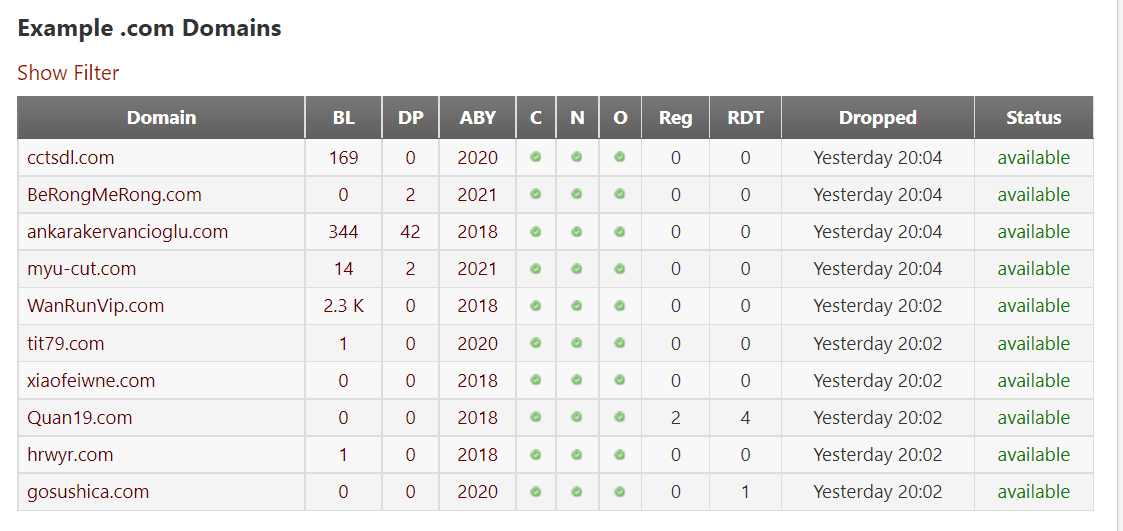The idea of grey hat SEO is that there are Search Engine Optimization (SEO) techniques that don’t quite over cross over to the dark side but veer close to it. Technically, grey hat SEO strategies are allowed by search engines. However, these tactics tend to fall in a grey area both morally and practically (hence the name).
In this article, we’ll break down the concept of grey hat SEO for you. We’ll discuss some of the most popular grey hat techniques that you can use and provide white hat alternatives to them. Let’s get to it!
What Is Grey Hat SEO?
White hat SEO is all about following the guidelines outlined by Google and other search engines. It involves creating content based on user search intent, building links organically, optimizing your website for search engines using SEO plugins and proper website structure, and providing a pleasant user experience. These are tried-and-true, approved, official ways of ranking highly in SERPs. The downside to going the white hat route (which you should!) is that it takes time to see results.
On the other hand, black hat SEO focuses on getting results as quickly as possible, often by breaking the rules. Some examples of black hat SEO involve faking or buying links instead of building them. You can also copy and spin content (read: steal content) instead of writing your own. Black hat tactics sidestep search engine guidelines, all in the name of getting better rankings fast.
Grey hat SEO, though, can be more tricky to define. Technically, these techniques don’t break the rules. However, they’re designed to exploit how search engines calculate rankings. Depending on your approach to grey hat SEO, your website can get penalized, deranked, or banned. Or you might be able to game the system and come out no worse for wear.
5 Grey Hat SEO Techniques to Watch Out For
When it comes to SEO, you want to avoid any sign of impropriety or trying to game algorithms. Engaging in black hat SEO can lead to penalties such as losing page rankings or de-indexing.
Grey hat SEO might not earn you the most severe punishments from search engines, but you always run some level of risk when implementing them. Let’s break down some common grey hat techniques and their white hat alternatives.
1. Creating Content That Doesn’t Offer Value
Ideally, every page and blog post you publish should offer visitors value. Your content can answer questions, point users to relevant resources, offer great deals, or more.
The grey hat approach to content creation focuses entirely on keywords. You do keyword research to find the most promising options and create content that doesn’t offer any real value. Instead of providing visitors with information, grey hat tactics only focus on traffic and short-term results. This tactic is often used to get as many eyes on ads as possible, knowing fully that the user will find nothing to keep them there after the click.
Although the gray hat approach to content creation might get visitors (sometimes in bulk), it’s not a viable long-term strategy. Once users realize that your website doesn’t offer much merit, they’re not going to stick around. They’ll look for other resources and maybe even avoid your page in the future. Also, Google and other search engines will see that your bounce rate is incredibly high and investigate further.
When putting together blog posts, you want to ensure that you’re tackling each topic in as much depth as possible. Articles don’t necessarily need to be longer than your competitors’ (although the Skyscraper approach can work well). However, your content should ideally be more engaging, easy to read, and provide information in a digestible format. And again, respond directly to your users’ search intent.
2. Using Expired Domains
Sometimes, you’ll run across a domain name that doesn’t have an owner but has a long history. You can often find domains for sale with hundreds of backlinks. Buying them can help you launch a website that has a lot of authority out of the box versus starting from scratch. Take a look at these examples of expired domains, specifically the BL column for the number of backlinks:

With this technique, you can buy expired domains and redirect their traffic to another website. That approach lets you pass on some link “juice” from a site that search engines already consider reputable.
If you want to go the extra mile, you can seek to revive a full website by looking at cached versions of its content. That way, you can gain ownership of a fully-working website that might rank well out of the gate.
However, if you redirect the domain, it might point to an unrelated website. Likewise, if you buy an expired domain only to revive its website, you should be somewhat experienced with the niche you’re working with.
Building backlinks and a content library from scratch isn’t a glamorous process. However, it’s the best way to create a website that doesn’t rely on sketchy tactics for backlinks and truly offers relevant content.
3. Buying Links
Buying links can be a grey or a black hat SEO technique, depending on who you ask. Going by Google’s Webmaster Guidelines, link buying or trading constitutes “link scheming”. This strategy is a way to game search engine algorithms, which is why it’s frowned upon.
In practice, link buying and trading are incredibly popular among website owners. Some publications mask the approach by charging for guest blogging (or “sponsored” posts), which essentially means you’re buying links. There are tags you can use to mark sponsored posts, which makes this closer to white hat tactics, but those don’t get used as often as they should, which is why this is in that muddy grey area.
Link buying can be hugely successful if you have deep pockets and target the right websites. You can get great SEO results fast. However, you have no protection if the owner decides to remove a backlink.
The same thing can happen with organic backlinks. However, in that scenario, you’re not out money. Since you’re building links organically, you’re also not violating the Google Webmaster Guidelines (which means you can’t be penalized).
4. Using Hosted Blogging Platforms to Build Backlinks
Blogging platforms such as Medium or Tumblr come with built-in audiences. If you can publish a blog post that gains traction on one of these sites, that content can include a high-value backlink to another website.

Arguably, this SEO tactic is more white than black hat. Sort of light grey. If you publish content that users want to read and link to another website because it’s relevant, you’re not breaking any rules. That’s how you’re supposed to do it.
However, it’s not that common for a blog post on platforms such as Medium to get a lot of attention. Often, only viral posts or popular authors get most of the clicks. Additionally, some people have set up multiple Medium, Tumblr, or Substack blogs and newsletters to form a sort of personal blog network to interlink. That’s directly in Google’s black hat guidelines.
Adding backlinks to Medium and similar platforms won’t benefit your original website much if you aren’t already popular with an established audience or hit the big-time and go viral. Instead, you might be better off publishing new content directly on the site you’re trying to rank up, or you should go looking for guest blogging opportunities from people already established on those platforms.
5. Paying for Reviews
Google prioritizes search results with positive reviews since visitors will usually be happier with these recommendations. If you have a business with positive testimonials and great local SEO, you’re likely to appear among the top results in your area.
Unfortunately, getting good reviews often takes a lot of time. You may get a couple of five-star ratings right after launching a business, but accumulating hundreds of testimonials takes time.
Some business owners sidestep that wait by paying for positive reviews. Arguably, this is a black hat SEO tactic, but it can be hard to detect, which is grey hat SEO’s claim to fame.

Buying positive reviews is a lot like purchasing social media followers. Often, the testimonials are obviously fake, and they add little value to your account. More importantly, Google can remove fake reviews at any time due to its terms of service. So like buying backlinks, you have no recourse, and you will have lost money.
Although this approach can help you skyrocket in the local SEO results, you also open your business to many risks. If Google chooses to penalize you, it can impact your business listing permanently.
Conclusion
There are some common misconceptions around grey hat SEO techniques, and the main one is that they are undetectable and might as well be considered white hat. That’s not true. These strategies may not result in SEO penalties for your website in most cases. However, depending on which method you use, you may be crossing the line to black hat SEO, which can definitely put your rankings at risk. And as fickle as we all know Google is with its algorithm updates, using SEO tactics that it may penalize on a whim is a pretty big risk.
Here are five of the most common grey hat SEO techniques that you may be using without realizing there are safer alternatives:
- Creating content that doesn’t offer value
- Using expired domains
- Buying links
- Using hosted blogging platforms to build backlinks
- Paying for reviews
Do you have any questions about grey hat SEO techniques? Let’s talk about them in the comments section below!
Featured image via Turan Ramazanli / shutterstock.com









Leave A Reply